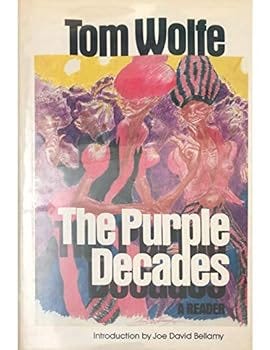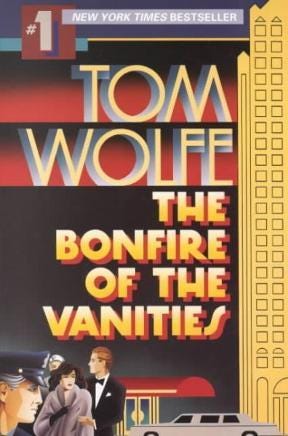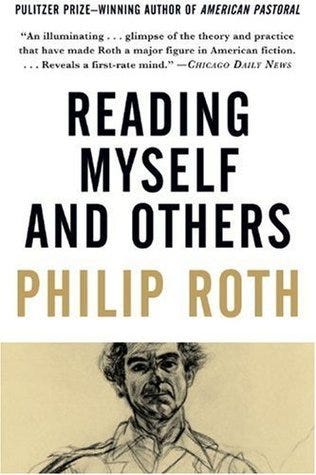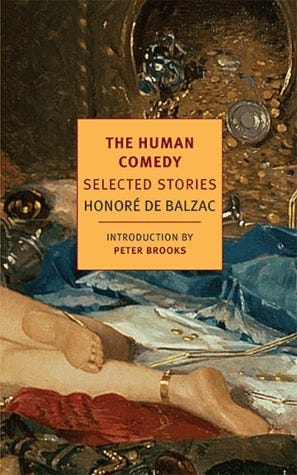Exactly where I first heard of Tom Wolfe (1930-2018), the American essayist, New Journalist, and sometime novelist, I'm not sure. In my latter years of high school in the mid-1980s I had a subscription to Rolling Stone magazine, which serialized Wolfe's novel, The Bonfire of the Vanities (1987) over a number of years prior to its book-form publication. So, that's probably ground zero.
Around that time I found his 1982 anthology, The Purple Decades, in a used book shop. I never read The Purple Decades cover to cover. The stories didn't interest me. What drew me was the writing. His voice was compulsive, confident. His prose, aaahhhhhhhhh, what exactly? FUUUUUUNNNNNNN!!!!!!
There was clearly something singular and attractive about someone who used titles like The Kandy-Kolored Tangerine-Flake Streamline Baby (1963). Loosely, I was looking for writing that engaged the contemporary situation. Wolfe clearly did that. He had a take. I was curious to encounter all takes. I'm not sure I ever found his take persuasive, but it was interesting.
When I took a magazine writing class in 1990 at institution now known as Toronto Metropolitan University, the instructor presented Wolfe as the Great Example. Magazine feature writing, he said, mixed the techniques of fiction (dialogue, character, plot, setting) with the reporting muscle of journalism. Show, don't tell. Explain the world through stories. Ground the narrative in fact. Wolfe's work was Example A. I tried to do this a few times, never terribly well. I kept wanting to make up stuff. Still, I liked the explaining the world through stories mission. Using language to carve out sharp truths. Illuminate the contemporary situation, authentically. Show the world as it really was. A reality-based approach to literature.
In November 1989, Harper's Magazine had published Wolfe's literary manifesto, "Stalking the Billion-Footed Beast." The Beast is New York City, the stalker is Wolfe, hunting his life's goal, the Big Novel About The Big City. Somewhere around here I still have an original copy of that 1989 issue, because Wolfe's thesis there stuck to me as if powered by a billion-tonne magnet. Reality-based literature? Yes! Narratives grounded in reporting? Yes! Capturing the wild and wooly metropolis? Yes! In my case, though, it wasn't New York City, it was Toronto, my home town. As a teenager, I spent my weekends wandering around downtown, taking it all in. The heritage buildings, the used book stores, the neon lights of the strip clubs, the homeless, Chinatown, Greek Town, the cultural diversity of any subway ride across town. I wanted to capture this experience in art somehow. Though I often took my camera on my walks, images weren't how I wanted to capture the story. I wanted to do it in words. I still do, deep down, that dream hasn't died, it's just ... well, it's complicated.
Recently, I read Bonfire as an audio book, then I went back and re-read "Stalking the Billion-Footed Beast." I'd never read Bonfire before, and boy did it suck. Not that it didn't have its moments, but, first, it hasn't aged well. How many times were the female characters described as having perfect swelling breasts? Once is too often, it happens many multiples of once. I was going to write that Wolfe doesn't know how to write a Black person, but then, really, he doesn't know how to write a human being generally. Bonfire is a cartoon fantasy of a novel. A reality-based approach to literature? Nooooooooo!!!!!!!!
This novel could be Exhibit A in the case for why the world "literature" and "reality" should never appear in the same sentence. Nabokov had a solution to that: "‘Reality’ is the one word that should always appear in quotation marks."
But then, Nabokov is no hero to Wolfe.
By my count, "Stalking the Billion-Footed Beast" includes references to 43 writers. All would all be male if it weren't for the inclusion of Pearl Buck and Iris Murdoch, the latter of whom isn't held up as a model; she just "had dreamed up the same quality and chosen the same word" to describe her ambition for her prose as Wolfe: "I decided I would write crystalline prose." Sure, whatever. The other 41 writers in Wolfe's essay, all men, are also all white. Still, some distinctions are made. Some represent the kind of writer Wolfe wants to be: Balzac, Zola, Dickens, Thackeray. Others are writers and critics Wolfe accuses of taking American literature down a lost and lonely path: Lionel Trilling, George Steiner, Ronald Sukenick, Borges, Beckett, Pinter, Kundera, Calvino, Garcia Marquez "and, above all, Kafka."
Wolfe's point — the gold nugget of his thesis — is that American writers abandoned "realism," and he's calling them back to the alter. No more small personal stories. Return to stories of sprawling social purpose, the whole human comedy.
Who was responsible for tempting American writers off of the divine path?
"Above all, Kafka."
Ha, ha, ha, ha, ha, ha, ha, ha, ha, ha, ha, ha, ha, ha, ha, ha, ha ………….
Haaaaaaaaaaaaaaaaaaaaaa!!!!!!!
Actually, the essay provides quite a decent reading list (especially if you read against Wolfe's advice; what I suggest, though, is read all of it ... and more). Make your own list of the missing ones. Toni Morrison. James Baldwin. Salman Rushie. Zora Neale Hurston. Mary McCarthy. Virginia Woolf. Brontes. Austen. George Eliot. James Joyce. Cervantes. Richard Wright.
The names of the missing is long.
Wolfe:
The dividing line was the year 1960. Writers who went to college after 1960 ... understood. For a serious young writer to stick with realism after 1960 required contrariness and courage.
Wolfe says writers like Saul Bellow, Robert Stone, and John Updike "found it hard to give up realism, but many others were caught betwixt and between." Poor Philip Roth, for example:
By 1961 Roth was having second thoughts. He made a statement that had a terrific impact on other young writers. We now live in an age, he said, in which the imagination of the novelsit lies helpless before what he knows he will read in tomorrow morning's newspaper. "The actuality is continually outdoing our talents, and the culture tosses up figures daily that are the envy of any novelist."
I remember reading this back in the day and thinking, no, no, no, I will be the kind of writer who isn't outdone by the morning newspapers. This is what I liked about Wolfe's essay; the throw-down challenge, the one he himself had taken up in Bonfire. (The passage reminds me of a review quotation on the paperback version of Eric McCormack's Inspecting the Vaults (1987): "murder, deformity and cruelty are treated like everyday occurrences." Well they are, right?)
But before we go back to Bonfire, I want to take a few more stabs at the essay. Let's take the notion posited by Wolfe that Dickens and Hemingway co-exist within a category called "realists." First, what do we know about Hemingway if we know anything about Hemingway? The iceberg theory, right? (Google “iceberg theory images” to see it illustrated.) Nine-tenths of what Ernest wanted to get across he left unsaid, for the mind to fill in, the way it does in the Impressionist paintings he saw in the Louvre and which he said in A Moveable Feast (1964) influenced his approach to prose. Would we call the Impressionists "realists"? No. And neither is Hemingway.
Dickens, on the other hand, is a different kind of Impressionist. His genius staked its case on the melodramatic. He had a massive gift for caricature and a knack for maximalist description. When we think about the ability of so-called realistic fiction to paint pictures in the mind, heighten our emotions with intense personal connection with characters on the page, Dickens is at the forefront. Twice Wolfe mentions how Dickens' "Little Nell" drew tears from readers. Well, bravo, he was a terrific propogandist for sentimentality. Hard-nosed reality? No.
Wolfe offers no definition of "realism" or "realist," except to suggest that pointy-headed Marxists in the academy wouldn't know it if bashed them in the face. For all his desire to be taken seriously as a thinker, there's a strong strain of anti-intellectualism here. We can grapple towards a definition of realism by suggesting it is writing without magic, without the fantastical, without bends in the space-time continuum. "Just give me the facts, Mack." "Just tell me like it is, Slim."
The problems pile up.
Bellow a realist? Not in Henderson the Rain King (1959). Updike a realist? Not in The Witches of Eastwick (1984). Faulkner a realist? The Sound and the Fury (1929) is an experimental masterpiece surely not even lost on Wolfe.
In response to Roth's claim that "the actuality is continually outdoing our talents" Wolfe will have none of it:
American society today is no more or less chaotic, random, discontinuous, or absurd than Russian society or French society or British society a hundred years ago, no matter how convenient it might be for a writer to think so. It is merely more varied and complicated and harder to define.
Though most of that is correct, that last sentence is cause for pause, is it not?
Then, again, we must note his silence on how the "reality" in the past excluded so many voices, so many perspectives. So many stories went untold. "Just the facts" relied on ignoring so many of them.
Later he says:
Philip Roth was absolutely right. The imagination of the novelist is powerless before what he knows he's going to read in tomorrow morning's newspaper. But a generation of American writers has drawn precisely the wrong conclusion from that perfectly valid observation. The answer is not to leave the rude beast, the material, also known as life around us, to the journalists but to do what journalists do, or are supposed to do, which is to wrestle the beast and bring it to terms.
The example of how to wrestle with the beast supplied by Wolfe is Zola's novel Germinal (1885), which includes descriptions of miners underground with an immense horse. Zola went into the mines as part of his research for the novel, and he asked the miners how they got the horse in and out of the mine every day. Ha, ha, they said. The horse comes down once, as a colt, and never leaves. As Wolfe points out, in the novel the horse serves as a metaphor for the miners themselves, a metaphor Zola only acquired through entering the mine himself.
Wolfe is onto something valuable here, and it powers his ambition to paint a portrait of New York City in the 1980s in Bonfire. I say "valuable" because, surely other writers possess an ambition to respond to the immensity of the moment. For example, I kept wondering how Alberta's oil sands would be captured in fiction, the wild west of Fort McMurray. Then Kate Beaton did it in her awesome graphic novel, Ducks (2022).
Wolfe wonders where all the novels of the tumultuous Sixties are: "After all, among the hippies were many well-educated and presumably, not to mention avowedly, creative people." (Condescension doesn't come any thicker!) The era of the past decade has been no less tumultuous. I could see Wolfe calling out for novelists to respond to the wildness of our times. As a reader, I'm eager for them too.
Still, so much of his essay is naive and wrong-headed, to say nothing of how blind it is to all the writers, voices, and perspectives it sadly can't bring itself to mention. How do you capture the multiplicity of the billion-footed city? Surely, first, by listening to the multiplicity of its voices.
Because that is the thing that shocked me, yes, shocked me, about Bonfire, when I finally got around to reading it. I was curious how Wolfe would capture the polyphonic nature of the urban carnival, and what I found was, he didn't. The prose may be crystalline. Sure, why not. But the soundscape is mono, not stereo. Wolfe sets up a dynamic social conflict in the novel between what he would probably call "elements of society," high and low, rich and poor, black and white (and Black and White), but as a reader I felt none of them were "real." They were all mouthpieces for Wolfe. The billion-footed beast can be many, many things, but if it is to resonate as art it must move beyond the echo chamber of the self.
Ironically, perhaps, Wolfe might have learned that from Kafka.
Art does not come alive merely as observation; it must be filtered through the imagination and, broadly, the mind.
In a 2014 edition of Balzac's The Human Comedy, editor Peter Brooks writes:
He [Balzac] stands as the first true realist in his ambition to see society as an organic system. Oscar Wilde came close to the heart of the matter when he declared: "The nineteenth century, as we know it, is largely an invention of Balzac's." Balzac "invents" the new century by being the first writer to represent its emerging urban agglomerations, its nascent capitalist dynamics, its rampant cult of the individual personality. By seeing and dramatizing changes that he mainly deplored, he initiated his readers into understanding the shape of the century. "Balzac's great glory is that he pretended hardest," declared his faithful discipline Henry James. In the art of make-believe, Balzac was the master.
Key words jump out from this passage: "make-believe," "invention," "dramatizing." These are not skills Wolfe emphasizes. Instead, he tells us his version of how to write best:
That task, as I see it, inevitably involves reporting, which I regard as the most valuable and least understood resource available to any writer with exalted ambitions, whether the medium is print, film, tape, or the stage. ... Dickens, Dostoyevski, Balzac, Zola, and Sinclair Lewis assumed that the novelist had to go beyond his personal experience and head out into society as a reporter.
The example he provides about his own reporting involves a discovery he made on the New York subway system.
I started riding the subways to the Bronx. One evening I looked across the car and saw someone I knew sitting there in a strange rig. He was a Wall Street broker I hadn't seen in nine or ten years. He was dressed in a business suit, but his pant legs were rolled up three or four inches, revealing a pair of olive green army surplus socks, two bony lengths of shin, and some decomposing striped orthotic running shoes. On the floor between his feet was an A&P shopping bag made of slippery white polyethylene. He had on a dirty raincoat and a greasy rain hat, and his eyes were darting from one end of the car to the other. I went over, said hello.
Research! Insight! Metaphor! The dressed-down man, of course, makes an appearance in Bonfire. But as a metaphor for what? The breakdown of social order, as Wolfe sees it. His friend is hiding in plain site, attempting to be a less attractive victim to what Wolfe calls "packs of young toughs." There's a, um, lack of realism in this description, because he means Black males. Wolfe's friend is a metaphor for White fear, racialized fear, White fragility is another term in use.
Wolfe thought he had a great narrative device until December 1984, when:
Bernhard Goetz found himself in an identical situation on a subway in New York, hemmed in by four youths who were, in fact, from the Bronx. Far from caving in, he pulled out a .38-caliber revolver and shot all four of them.
The newspaper overtakes the author's imagination! Still, Wolfe could have made something of this racist vigilante. Wolfe doesn't have his character pull out a gun. It would have been more interesting (and added more complexity), but it didn't serve his plot. (Notice again how the "four youths" are racialized without being racialized. They are not Black, they are from the Bronx.)
I mean, of course there is legitimate fear of being mugged on the subway. I have young people in my life who took the subway to high school during the pandemic when so many others stayed safely at home. I was told, "The only people on the subway are the homeless and students." I know, not true. The shift workers and others who couldn't work from home were there, too. But this is a White teenaged girl's perspective. She had to devise strategies to evade predators, who had more free reign the the less populated subway system. A couple of times she had to run. The billion-footed beast! All the shitballs of the human comedy! The stories that make the contemporary moment come alive.
But how you frame it is essential, too. Race is a significant factor in the plot of Bonfire, but one gets the feeling that Wolfe thinks the differences between people are superficial, certainly not historical and systemic. The novel includes statements that readers are clearly meant to read as racist (and tsk tsk over). But overall, the portrait of New York City emerges as a caterwall of misdirection and misunderstanding as the characters pursue their self-interest and what is real and what is not is crushed in the process. Sad ironies prevail. Wolfe aims to be seriously literary, surely. For this reader, he fails.
In conclusion, then, I'm going to tell you why I titled this piece, Tom Wolfe (2004) and what I was up to that year (or so). I saw Wolfe at the University of Toronto's Convocation Hall around that time. Ian Brown interviewed him. I guessing it was 2004 because he was promoting his latest novel, which was I Am Charlotte Simmons (2004), which Wikipedia describes as "concerning sexual and status relationships at the fictional Dupont University. Wolfe researched the novel by talking to students at North Carolina, Florida, Penn, Duke, Stanford, and Michigan."
Googing the novel, I unearthed Lynn Crosbie's scorching review, "Charlotte Go Home," in the Globe and Mail (December 4, 2004):
I Am Charlotte Simmons is a novel best read as a simulation of master Sidney Sheldon's work: Revamped as trash-lit, it tells the riveting tale of an outsider among archetypes, one whose destiny (which is, bluntly stated, to reiterate the book's title in an act of feminist puissance) becomes entangled among the warring factions of the athletes, intellects and privileged that constitute Dupont-Harvard.
The depressing ending testifies to other of Wolfe's goals: Through Charlotte, he clearly hoped to find one of Gissing's or Dickens's hard waifs; instead, he half-draws a caricature. Simmons is as dead as the one-dimensional boys she plays with, boys who might have shocked the pre-Less Than Zero crowd, but do not shock now. She is as pathetically undefined as the cover illustration, which features a cheerleader (though none appears in the book) whose pounding chest appears to be lit by grotesque medical imaging, a conflation that tells us precisely nothing about her or the narrative's (failed) intention.
As social satire, I Am Charlotte Simmons surely fails. Satire, as Pope once wrote, is a "sacred Weapon . . . left for truth's Defence/ sole dread of folly, Vice and insolence!" Because there is so little truth available here, the satire lists like a drunken frat boy's amorous intentions.
Someone please give us Crosbie's Collected Non-Fiction!
In 2004, I was living in Leslieville, working 9-5 for a public sector organization, and spending almost every moment of my spare time editing the online literary magazine, The Danforth Review, which began as a lark/experiment in 1999 and remained in my life in one form or another (with a break of two years, 2009-2011) until 2018. I was 36 and single. I was not then and am not now interested in the status games that so fascinate Wolfe. I was trying to write my own short stories, too, but they were getting fewer and more far between.
In 2002, my story “The Adulterer” won the fiction contest in Toronto's Word Literary Calendar, and in 2003 my story “The Sandwich Factory” was published in lichen and the magazine nominated it the Journey Prize anthology (though it ultimately was not included). In 2004, my story “Six Million Million Miles” was published online at the Plum Ruby Review and later selected for the 2005: Best Canadian Stories. Also in 2004, my story “Live Bait” appeared in Qwerty, winning that magazine's fiction contest.
In 2004, all my book reviews that year appeared in The Danforth Review:
Douglas Glover. The Enamoured Knight.
The Art of Desire: The Fiction of Douglas Glover. Ed., Bruce Stone.
Jaspreet Singh. 17 Tomatoes.
Gary Barwin. Doctor Weep and Other Strange Teeth.
Coming Attractions 04, featuring Neil Smith, Maureen Bilerman, Jaspreet Singh.
Douglas Glover. The South Will Rise at Noon.
James Grainger. The Long Slide.
Greg Kearney. Mommy, Daddy, Baby.
John Lavery. You, Kwaznievski, You Piss Me Off.
In The Danforth Review I also interviewed authors. Between 2003-2005, those included:
Tony Burgess
Lynn Coady
Gregory M. Cook
Peter Darbyshire
Craig Davidson
Joelene Heathcote
Greg Hollingshead
John Lavery
Jennifer LoveGrove
John MacKenzie
Andrea Ryder
Carrie Snyder
Ken Sparling
J.J. Steinfeld
Anne F. Walker
Finally, in 2004, as The Danforth Review's fiction editor I oversaw that year's two fiction issues, #11 and #12.
ISSUE #11 - March 2004
Thea Atkinson, Broken China
Corin Cummings, excerpt from "Night Support"
Anthony De Sa, Only a Boy
Janina Hornosty, Four Way Stop
Yusouf Mohammad, A Birth in Sharjah
Michael O'Neill, Poema Woman
Lisa Polisar, The Manolo Peninsula
ISSUE #12 - September 2004
Jennifer Amey, Here is a Story I Wrote
Silas Grey, Bluebells and Gravity Probe B
Shane Jones, Figure Four Leg Lock
Andres Kahar, The Protector
Joel Katelnikoff, Hijinx Ensue
Richard L. Provencher, Stuffed in a Box
J.J. Steinfeld, Estimating Distances
Barry Webster, An Interesting Story About a Fascinating Life
For each fiction issue, I reviewed upwards of 200 story submissions. And, no, I did not read every word. Typically, I would read the first 100-200 words and hope for a spark of innovation or special spirit to encourage me to keep going. So many stories had a tone so similar as to be indistinguishable. I was looking for originality, whatever the subject matter.
Looking at this list of activities, I wonder how I didn't burn out, since I was doing all this literary activity on top of my 9-5 job — and for no compensation. Don't do this, people! Still, perhaps this was the most literarily engaged period of my life, the era of my 10,000+ hours. I recall it fondly, though I would never do it again without compensation, and, seriously, discourage anyone else from doing it either.
By late 2005 I had started my "Toronto novel," responding to my early ambition to do such a thing a la Wolfe and Bonfire. I wrote 100+ pages, some of it very good! But nearly completely devoid of a plot of any kind. Interestingly, like Bonfire, it involved the justice system as the means to bring people from different regions of the city together. And, yes, that is also code for races. The main character was a judge, who I figured would be interesting because he had the responsibility to integrate all of the narratives and present, at the end, something unified. Meanwhile, he had conflicts in his personal life that would make his judicial job more challenging. Sounds interesting, right? Not so much.
But I still take inspiration from the idea that there are infinite stories in the billion-footed city. If anything, this — for this reader — is Wolfe's best legacy. The challenge to get out of the house and find the stories.
Finally, just as I was finishing this piece, I remembered that I’d written about my Grade 13 writing project (1986-87), a two-voice drama called “Realities.” I’ve had a long-term interest in representations of Life/Art.






